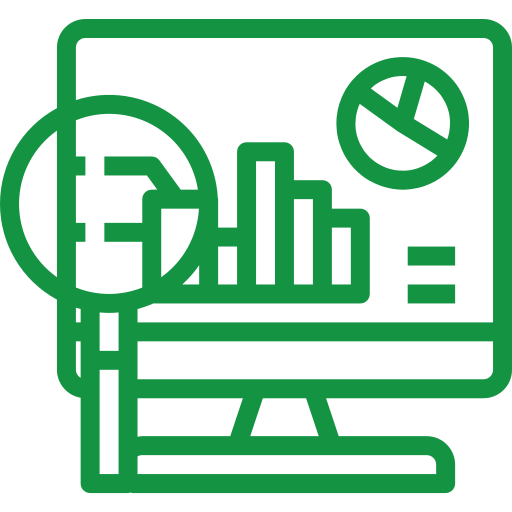The market for IT to support business operations is growing. At a rapid pace, information technology is a necessity for organisations. But still software implementation projects stall, are significantly more expensive than anticipated or even fail because the organisation's expectations do not match the solution offered by the chosen software vendor.
In addition, due to the rapid pace of development in information technology and still a large range of software vendors, organisations cannot oversee the possibilities. Often, such problems find their cause in the "misfits" from the package selection processes. This greatly increases the importance of selecting a suitable software supplier.
The high number of stalled and even failed software package implementations over the past decades is reason enough to establish a good standards framework when guiding software package selection processes. For years, IMPROVEN has used a (proprietary) successful standards framework for defining the requirements to make the programme of requirements measurable and guarantee an optimal fit.
The IMPROVEN standards framework
The IMPROVEN framework of standards identifies the organisation's requirements and wishes in (ERP) IT selection and classifies them according to different 'fits'. This allows Improven's clients to assess the intended solutions and/or supplier in specific areas at a later stage of an IT selection process and to measure how well they fit the organisation's specifically defined requirements and wishes. Of course, price is an obvious standard, with expectations also playing an important role. After all, in addition to the cost of the software and implementation, there are also the costs of (internal) management and internal hours for implementation support.
1. Process fit
An ERP implementation can involve radical organisational changes. Unlike "custom software"(tailor-made), "packaged software"(standard) requires adjustments to existing business processes. Process fit is therefore the first criterion for a standards framework. Improven's consultants describe the desired business processes in the form of use cases using workshops and interviews together with stakeholders and process owners. Software suppliers of packaged software often recommend process adaptations rather than software adaptations. This is because they believe that software modifications compromise the performance and integrity of the software. In addition, software vendors fear difficulties with maintenance and future updates. Connecting your desired processes based on market best practice is often the key to success. Especially when it comes to SaaS software. In an RFI/RFP phase, Improven seeks as much connection as possible with the client's desired processes and the vendor's best practices. This prevents radical software modifications, increasing the chances of implementation success. Research by (Hong&Kim,2002) shows that if process adaptations are low, there is a stronger relationship with implementation success.
2. User fit
The user fit, can and do the users want to work with the system, is the second criterion for the standards framework. Since a successful software implementation depends on the user acceptance rate, Improven takes into account during the selection and drafting of the requirements of a software package that it fits the existing users. If your ERP implementation does not focus enough on the end user, you will face low user acceptance of it. If your employees do not see the usefulness of the new ERP, if it does not help them do their job better and if it makes their tasks more complicated instead of simpler, they will not use the system very efficiently after implementation. Therefore, during selection, already consider aspects such as training and education, implementation support, management efforts and easy use of the system within the future process.
3. Data fit
Data fit is the third criterion we added to our standards framework. This part assesses whether the software fits within the data structure of the organisation. This involves specific data that must be captured and exchanged using the software package or held by the IT system. This is becoming increasingly important with the rise of data analytics and data science as data from internal and external sources and source systems are increasingly combined for a 365-degree view.
4. Strategic fit
An important aspect in a selection process is the strategic fit between the software vendor and the organisation. It is important that the supplier can actually contribute to, and support, the organisation's strategy with the software. It is also important that the supplier continues to develop the software with the right direction and focus and does not offer "end-of-life" packages. Suppose an organisation, in the context of sustainability, wants to work exclusively with digital reports as a strategic objective but the software only exports pdf reports? In this situation, there is a strategic misfit and the software vendor does not fit the organisation's strategic objective at this point. This can lead to problems during but also after implementation.
5. Technical fit
Technical fit as a standard is used to test whether the software fits into the organisation's technical architecture and infrastructure. This involves checking whether the software supplier's technology is stable and can keep up with future technological developments. Criteria on data privacy/protection should also be included and tested. These play an increasingly important role, especially when choosing a SaaS solution where the data is stored in the cloud.
Suppose an organisation's technical architecture is based entirely on SaaS solutions. In this situation, a software vendor that only offers software installation on local servers does not suit the organisation. It also happens regularly that vendors sell a proposed solution as a SaaS solution but this is actually not it but concerns existing software in an own data centre where you still have to do updates etc. Including solid technical criteria can prevent this.
6. Vendor fit
Vendor fit is the sixth criterion. When purchasing, implementing and using a software package, the vendor and the organisation enter into a long-term partnership. In this partnership, it is important that the vendor fits the vision and corporate culture of the organisation. For instance, the software supplier SAP does not fit the corporate culture of the artisan bakery around the corner and vice versa. For example; with a small software supplier, a small party is more likely to have the wishes/requirements of the organisation taken into account because it is also an important customer for the supplier. The latter is extra important with SaaS because customisation is much less common and you can often only make configuration changes and you are therefore dependent on the process by which the supplier identifies, assesses and implements software changes. The influence you can exert on this process as a small organisation can thereby be decisive in the choice of package or supplier.
7. Sustainability, social return and innovation as emerging new norms
Through innovation in IT, sustainability and social return goals can be reconciled with economic goals. However, in order for large and medium-sized organisations to make use of these and (future) innovations, IT contracts between customer and supplier must also allow for this. It makes sense to draw up a standard for this too, in which you test the future supplier to what extent they can meet your sustainability and/or social return ambitions. This way, you create benefits for the organisation. CSR can contribute to consumer brand loyalty, company credibility and employee engagement. There is a match when the chosen CSR activities clearly match the essence of your organisation.
In conclusion
IT and ERP selection deserves a well-thought-out framework of standards. Using a solid standards framework is a good (audit) tool for drawing up wishes and requirements during selection and assessment of a system. This can prevent disappointments during and after implementation. Setting up standards is essential for comparing the jungle of suppliers with criteria that have been agreed in advance and are not only of a system-technical nature. A good standards framework provides sufficient guidelines on how to set up the software and supplier assessment. The success of software selection and implementation is significantly enhanced with the help of a good standards framework.
Want to know more? Contact Michel Hoeijmans, managing consultant at IMPROVEN at michel.hoeijmans@improven.nl or 06 13 36 07 21.






















